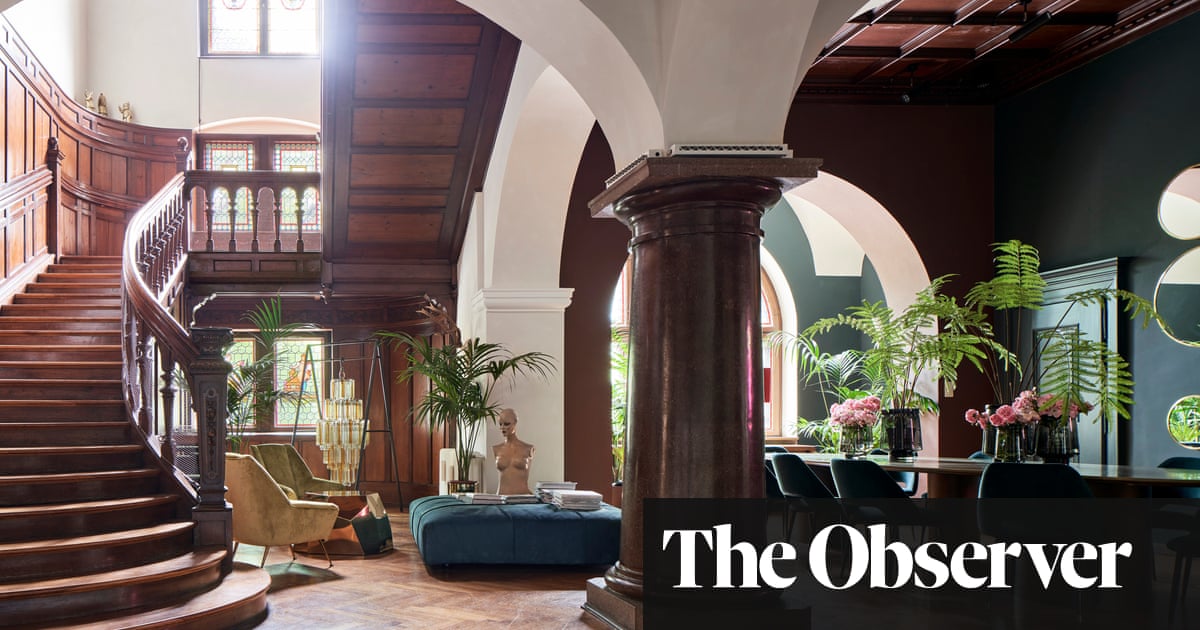
The Garden Museum in London is running an architectural competition for the design of a pavilion for St Mary’s Gardens, a leafy enclave next to its premises in a converted church in Lambeth, south London. I am a member of the interview panel. The winner has yet to be chosen, but I can reveal that it won’t be a submission from one Minecraft builder that shows a blue-tinged skyscraper that occupies the entire footprint of the garden.
It comes with a justification based on the menace of “very bad” grey squirrels to Britain’s ecology: “How do we stop grey squirrel[s]?” it asks. “Squirrels eat nuts. Nuts grow on trees… if we remove the trees we stop the grey squirrels,” the submission explains. So “to remove trees we build a big tower. It will also sell for a lot of money because it’s so big.” It ends with a sop to whoever might be troubled by the loss of green space: “It can also have a garden on the roof.” It’s meant to be a joke and, as I say, it won’t win. But it deserves some kind of a prize: as a parody of the bogus arguments whereby towers are allowed to trample over British cities, it’s genius.
Question of balance
At the other, southern end of the borough of Lambeth stands (at least for now) Central Hill, a council estate whose stepped terraces were skilfully and thoughtfully arranged over steep slopes that face back towards the centre of the capital, in a location close to where the Crystal Palace once stood. The design arranged blocks of homes so as to preserve mature trees and create quiet, informal enclaves. It was completed in 1975, three years before Alexandra Road and Branch Hill, council estates in the borough of Camden that also use stepped terraces to create a variety of spaces.
The latter two are listed buildings but Historic England has just refused, for the second time, to recommend listing for Central Hill, for reasons that don’t seem to make a lot of sense. The design was “not particularly innovative”, it said in its first refusal, even though it predates the Camden examples. The “level of threat”, it says now, “cannot be determined”, even though the borough of Lambeth has clearly stated its intention to demolish the estate.
One difference between the projects was that Central Hill was – unusually for the time – designed by a woman, Rosemary Stjernstedt. The other two were designed by men. Campaigners for Central Hill’s listing say that approximately 0.015% of listed buildings were designed by women, so Historic England has just passed up an opportunity, however modest, to redress the balance. One architectural construction its decision does preserve, it seems, is the glass ceiling.
Tucker takes aim
The Fox News host Tucker Carlson, on a recent trip to Hungary to extol the regime of Viktor Orbán, took time to praise the country’s “pretty buildings”. In America, he said, there is “ugly architecture, brutalist architecture, glass and steel architecture, Mies van der Rohe architecture”, which sets out to “dehumanise us”. Dehumanisation, he said, is the “act of convincing people that they don’t matter”. Perhaps he should have a word with his hero, Donald Trump, who built quite a few structures in his career as a property developer that, objectively, are built of steel and glass and, subjectively, might be considered ugly. On second thoughts, maybe not: I’d hate to think what Trump’s idea of “pretty” would be.












